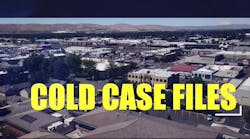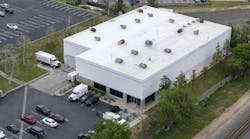Nov. 19--Ford. Chevy. Ford. Chevy. Ford. Chevy.
The century-long battle for market share and customer loyalty has entered a new phase as a pair of America's auto giants angle to produce the nation's next top cop car.
Ford dominated the patrol vehicle market for nearly 20 years with its Crown Victoria Police Interceptor, but competition shifted into overdrive when it phased out the Crown Vic in favor of a revamped 2013 Ford Police Interceptor, a sedan loosely based on the Ford Taurus.
Police agencies around the nation have already started kicking tires, signing contracts and getting the keys for their new wheels. The early results of comparison shopping has seen the Camas Police Department opting for the Ford Interceptor, but the Washington State Patrol getting the rival 2012 Chevrolet Caprice PPV.
But which car is better? Representatives from the State Patrol's District 5 met with Camas police at their headquarters recently for a photo shoot and some car talk. Both the cars and the officers were cleaned and polished.
State Patrol Trooper Jeff Heath pulled into the parking lot and stepped out of his white Caprice, the first marked Caprice issued in District 5. Heath has been with the State Patrol for six years and got his new patrol car in mid-October.
"He's got a cool hat," Camas Sgt. Scot Boyles said and adjusted his collar. "I want a cool hat."
A reporter points out that he has three chevrons on his sleeve, indicating he's a sergeant. That's cool. He nods his head.
With the two cars parked next to each other, bumper to bumper, the officers take turns checking out the specs. Heath gets in the front seat of the Ford. His eyes light up as he plays with the switches and turns on the flashing red and blue emergency lights while Boyles goes over the car's features.
They're like kids in a candy shop. Or, more aptly, two police officers who are excited to have patrol vehicles that meet their needs.
Camas Police Department
When Chief Mitch Lackey asked Boyles to build him the perfect police car, Boyles researched all the options and tested out police cars to find the best fit for the Camas Police Department.
While Camas police patrol the city, they typically deal with short distances and lots of curvy roads. All-wheel drive with traction and stability control can grip wet and icy roads, Boyles said. Top speed wasn't as important as acceleration. He wanted his officers to be able to catch up to a car before the driver gets the idea to drive away.
The Ford goes from 0 to 60 quickly and smoothly. During a test drive, the car lingers at a stoplight on Sixth Street, waiting to turn east onto state
Highway 14. A motorcycle is right behind the car, and seconds later, after the light turns green, it's just a spot in the rearview mirror.
This thing can go.
The Interceptor has to rack up more mileage before officers can bring it to Portland International Raceway for EVOC, the emergency driver training police have to complete every year.
Besides performance, officer safety was a top priority. The Ford's reinforced steel frame is built to handle a 75 mph rear-end crash.
A rearview mirror camera helps officers when they put the car in reverse, and when someone is in their blind spot, the car beeps and flashes signals in the side mirrors. The dash is clean, unlike the old Crown Vic, because the guts of the radio and siren switch system are stashed in an electronics tray in the trunk. This way, officers have improved visibility and won't get tangled up in wires. Boyles plans to program buttons on the steering wheel to activate the lights and sirens, saving officers time when seconds matter.
When the patrol car is parked on the side of the road, lights inside the trunk ensure oncoming drivers still see the emergency lights when the trunk is open. The front seats are sculpted to comfortably accommodate gun belts (and there's an "anti-stab" plate in the seat back, always useful). Boyles said those little details Ford paid attention to helped him make the decision.
Camas outfitted the cars with a couple of add-ons for police officers. Hands-free Bluetooth devices were installed in each car, so officers can talk without distraction. Although Ford included the "Dark Car Feature" that keeps the interior from being illuminated while officers are on stakeouts, the department added a switch on the console to kill the brake lights.
"I tried to give them the best tool," Boyles said.
There are four Crown Vics left at the Camas police station, and they'll all be retired by 2014. Typically, cars are replaced after 80,000 to 90,000 miles. If that number seems low, note that a police officer puts stresses on a car that an average person wouldn't. The cars can be driven up to 20 hours each day, sometimes aggressively, Boyles said. The department averages two new patrol cars every year, with eight cars total in the fleet. Several thousand dollars worth of parts, such as the console, hard seats and front bumper, will be stripped out and reused as the Ford Interceptors are retired.
Camas residents apparently approve of the new fleet: Boyles says Camas officers often get a thumbs-up as they drive through town.
Washington State Patrol
The State Patrol uses Dodge Chargers for their aggressive-driver apprehension program, but decided against them for patrol because they often get complaints about not having enough cabin room. The Washington Legislature approved the Chevy Caprice through competitive bidding and will buy all of the Caprices by July 1, 2013. The basic car costs $26,050. After taxes and retrofitted equipment, the total cost of the 200 new cars entering WSP service is about $7.8 million.
The Ford Police Interceptor wasn't available for testing when the contract decision was made.
Trooper Heath works in District 5, which covers Clark, Cowlitz, Lewis, Skamania and Klickitat counties. The district has 71 Crown Vics still on the road and three of the new Caprices. Heath took his Caprice to the State Patrol's four-hour driver training at the beginning of September.
"The best part is just really getting to know the car," Heath said.
The Caprice handles the road well and can take turns at 70 mph or faster, he says. In rainy conditions, if one of the tires is slipping, the car will adjust and give more power to the other tires. Even when officers were told not to brake around curves during training, the Caprice did it for them.
"It's a smart car," Heath says.
The Crown Vics have a push bar at the front of the car, while the Caprices have wrap-around bumpers that compensate for the shape of the car's front end. These bumpers allow troopers to successfully execute the PIT maneuver, where they force an eluding car into a controlled spin, without damaging the police vehicle.
The W-rated tires on the Caprice, typically seen on exotic sports cars, can handle higher speeds -- good for catching bad guys during high-speed pursuits. Like the Ford, the Caprice uses high-strength steel, eight air bags and a rollover sensing system to protect police in the event of a crash. Lights in the trunk prevent officers from getting "deep-trunked" by oncoming cars.
"Compared to the Crown Vic, it's a phenomenal car," Heath said.
Soon troopers will be doing everything remotely, sending tickets and writing reports, from the convenience of their Caprice. As the Crown Vics are replaced, so are the computers and cameras. A camera on the dash records traffic stops. There's also one facing the prisoner cage, recording backseat suspects.
Their car is essentially their office on wheels. (And who doesn't like to get a shiny new office?)
The State Patrol generally retires cars after 140,000 miles.
The newest police cars indicate car manufacturers are taking into account what police do in their cars each day.
While the Ford may edge out the Caprice on certain features -- the all-wheel drive, clean dashboard and extra side lights -- a clear winner won't be declared until these cars get some mileage. Give them some high-speed pursuits and winter weather and then we'll talk, police say.
One thing's for sure, though: While the Crown Vic was a reliable V8-powered sedan for law enforcement, its successors can literally drive circles around it. No, really. They both have ABS and stability traction control.
Patty Hastings: 360-735-4513; http://twitter.com/col_cops; [email protected].
.
Copyright 2012 - The Columbian, Vancouver, Wash.


